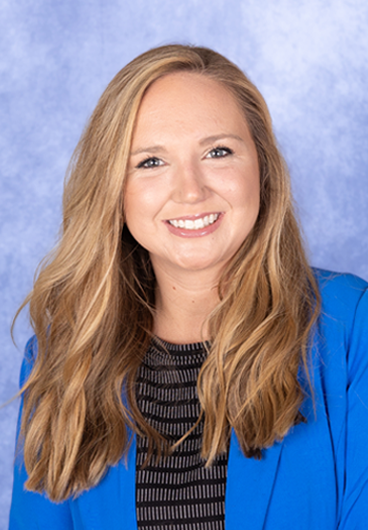
Tory Moix
Greenbrier Middle School
Greenbrier, Arkansas
moixv@greenbrierschools.org
Best Practices
1) Assistant Principal’s Role as Instructional Leader: When I think about the legacy I will leave in education, my hope is that I have built capacity within teachers, especially emphasizing new and novice teachers. As a person who believes collective teacher efficacy has the largest impact on students, I know the shared belief that “together, we can accomplish anything” mindset starts on Day 1. In my first year as Assistant Principal, we had 14 new staff members and 2 new additions to the administration team, including myself. It was vital to me that I created a more formal system to onboard, teach, and support our new and novice teachers. With approval from my Principal, I created our “Monthly Mentor/Mentee Meetings.” Each month, I would create a checklist of discussion points that aligned with upcoming and important events and/or tasks. I brought together our best teachers and paired them up with our new staff and each month, they met together to discuss the checklist. These meetings were casual and informative but also was a major foundation in building shared knowledge and resources between our staff. These meetings bridged the gap between new and returning teachers, which in turn resulted in positive staff relationships and an increase in shared knowledge of schoolwide expectations, systems, and strategies to support students’ learning as well as increased our school staff culture. We are in year three, and I am so proud of the depth and growth our monthly check-ins have become. My favorite addition to this is that now I host a corresponding “Hot Topic Session.” For example, this month is “October Observations!” In October, I hosted a “Sonic with the Scouts.” In this session, I covered what we are scouting for during walk throughs and formal observations. We took a deep dive into domains two and three and how multiple components overlap. These are completely optional but I encourage both mentors and mentees to join as it is my goal for this to also be a way to build capacity in teacher leaders. It helps that I serve lots of food and partner with a local coffee shop to set up their coffee bar for anyone who attends. I know that when a new person joins the team, we have a completely new team and that is the driving force for creating a formal system for our new and novice teachers to receive support during their first year. It is my passion that we equip teachers with the skills to be successful but more importantly that they believe they too can make a positive impact in the lives of our students.
2) Whole Child Initiatives: The design and implementation of our intervention period through intentional grouping to meet the needs of all learners is a major accomplishment. We plan this intentional grouping through the use of RTI Scheduler, which allows us to have specific intervention sessions to meet all our students’ current needs. I have worked to use our 35-minute intervention block as a multi-tiered system of academic support for intervention and enrichment opportunities. This block of time is foundational in meeting the needs of all of our learners. Over the years, I have worked to ensure this chunk of time meets our students’ needs by assisting with the moving parts of productive intervention such as the fluidity of rotations, types of groups, and implementation of differentiation within interventions. We have some students that are rotating on two week cycles, some on 1-3 day cycles, and some are closed sessions which means they are locked and do not rotate. During this time, students could be getting Characteristics of Dyslexia intervention, Tier II classroom intervention based on recent CFAs, pre-teaching, Tier III intensive reading interventions, book clubs, and above grade level extensions. This system started with me creating a spreadsheet and tiering our students to be “drafted” to intervention sessions. Our beloved spreadsheet has evolved into utilizing the RTI Scheduler database to track and pull students. This system ensures all teachers are creating sessions geared to specific skills and standards. Through this, we are able to determine what interventions students received all year as well as what each intervention session was covering. Every teacher in our building has a role and responsibility with this intervention period! I even took it upon myself to create a 5 week math group for a group of 8 students prior to ATLAS testing. Even though this is a major accomplishment, the work is never “done” in making sure our systems support what our students need. This year, I have worked to provide resources and training to teachers to build understanding in inclusive practices, UDL models, stations, and other high impact teaching strategies. My goal this year is to ensure communication of our learning intentions and success criteria even for our intervention/enrichment block.


